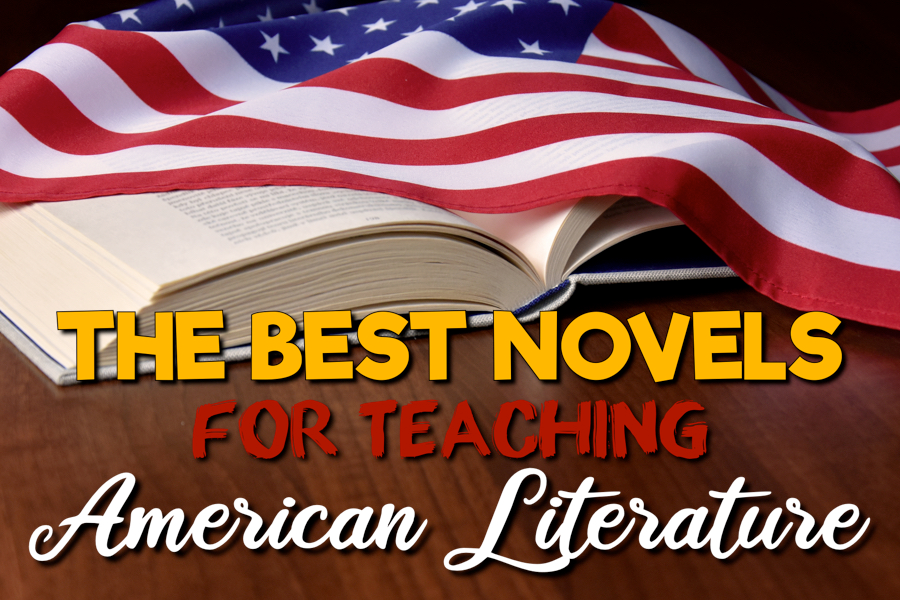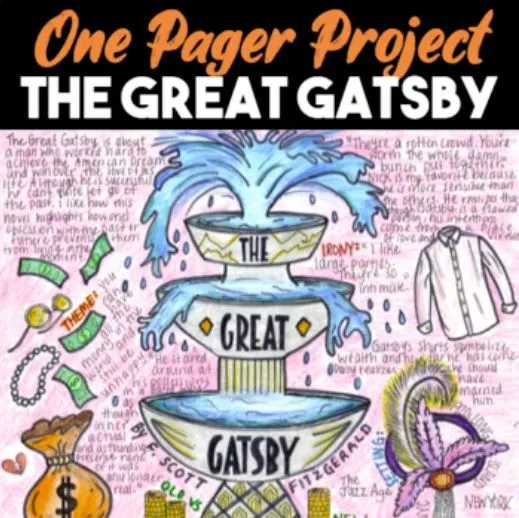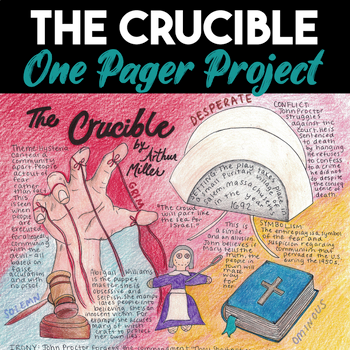Whether it’s your first time teaching American Literature or you’re looking to revamp your reading list, this post has all the titles you need for an engaging curriculum. This list is the perfect balance of relevant and engaging classics and modern-day texts your students will enjoy.
Are you looking for texts to read this year that meet your curriculum requirements and keep students interested?
When it comes to American literature, this can feel like a near-impossible task. After all, the traditional American Literature canon is filled with dense novels written by dead white men. Most American literature curriculum fails to include texts written beyond the 40s. They lack a sense of inclusion, leaving out many important voices that tell the story of this country. Therefore, we cannot claim the canon is a complete and accurate representation of America’s past and present.
And if that’s the case, is there any chance of making American literature and its classics engaging and relevant in the diverse modern-day classroom?
The Secret to Making American Literature Novels Engaging
The secret to making American Literature engaging for students (and, yes, that includes those classic canon novels) is making it relevant. Therefore, we should strive to teach texts that can serve as both windows to our nation’s past and mirrors to the present day.
To get started, look at the themes. These overarching ideas and the bigger messages they reveal help students understand the foundations of the American identity, how it has changed over time, and how it has stayed the same. Finding relevant themes, regardless of when a text was written, is the key to getting students to buy in, make connections, and have plenty to discuss. (Bye bye boring class discussions!)
Luckily, I’ve compiled a list of classic American literature texts that are still relevant for today’s students. But because the canon of American literature certainly could use a little updating, I’ve also included a few contemporary titles you can teach, too!
It’s time we revamp our syllabi with more relevant texts and focus on finding ways to engage students in quality texts. If you’re a diehard classics fan, don’t worry. Plenty of classic American literature novels have more modern-day relevance than meets the eye.
Classic American Literature Novels That Students Still Enjoy
1. The Great Gatsby by F. Scott Fitzgerald
When I think of American literature, The Great Gatsby is always the first to come to mind. Why? Because of the tragic yet profoundly accurate exploration of the American Dream. It’s the idea that conspicuous consumption, power, and greed forever stand in the way of attaining the coveted American Dream.
Fitzgerald’s classic novel tells the story of Jay Gatsby, a self-made millionaire, and his relentless pursuit of happiness and love with socialite Daisy Buchanan. The story is filled with lavish parties, scandals, drama, and corruption and is short enough to hold students’ interest until the very end.
Why it remains relevant: Imagine how complicated Jay Gatsby’s story would be if he had an iPhone. With modern technology, disillusionment is more of a relevant theme now than ever before. Students can find connections between people’s lives on social media and Gatsby’s facade. Students can also draw connections between the unattainable American Dream in the 1920s and modern day. Are we, much like Gatsby, constantly reaching for more in a way that ironically keeps the achievement of the American dream out of reach?
2. The Crucible by Arthur Miller
Despite being based on the historical events of the Salem witch hunt in the early 1690s, Miller’s play is an allegory for McCarthyism and the Red Scare of the early 1950s. The play takes place in Salem Village and follows the town’s demise when a small group of girls begins accusing townspeople of witchcraft.
The play is filled with power-hungry individuals willing to go along with the girls’ deadly games for the sake of maintaining their status and reputation. Despite being a work of historical fiction, Miller’s play showcases the very real consequences of hysteria in society.
Why it remains relevant: The Crucible remains relevant all these decades later, thanks to its timeless themes of hysteria, power, reputation, conformity, and intolerance. There are so many connections to make between this play and the 24-hour media cycle of the 21st century. There are plenty of examples of these themes in the modern day between politics and pop culture. Have students research modern-day hysteria to see how this phenomenon is still going strong and, in many cases, exacerbated by modern-day technology. Have them look for other instances where people have used fear as a tactic to bolster their power.
3. Catcher in the Rye by J.D. Salinger
J.D. Salinger’s The Catcher in the Rye follows the life of narrator Holden Caulfield, a disillusioned 16-year-old boy who has just been expelled from school. (Rough start.) From here, Holden spends the novel searching for the truth and meaning of the adult world while holding onto the idea of innocence for dear life.
Students are drawn to Holden for his rebellious nature, use of swear words, and creative slang–that is, until they inevitably get annoyed by his whininess and negative outlook on, well, just about everything. (The pot calling the kettle black?) Regardless, Salinger’s novels provide a springboard for conversations about the qualms students have with the adult world and the impending reality check that comes with it.
Why it remains relevant: Angsty teenage protagonist. Need I say more? In all seriousness, the story follows a teenager as he navigates the challenges of growing up while trying to find his place in a world where it’s not always rainbows and butterflies. Sound familiar? I’m pretty sure that sums up a universal teenage experience.
4. Invisible Man by Ralph Ellison
Ellison’s Invisible Man begins by introducing an unnamed narrator who recognizes himself as an “invisible” man. The novel then takes the reader through various experiences throughout the man’s young adulthood that helped him realize his “invisibility.”
Every experience emphasizes that he lives in a society that refuses to acknowledge him for his talents, knowledge, or worth—or at all, for that matter. Therefore, he is effectively “invisible,” as he is repeatedly ignored and dismissed by those around him. Believe it or not, the story does have a promising ending, though, as the narrator finds the confidence to define his identity and (finally) claim his place in society.
Why it remains relevant: I mean, how could it not be relevant? Of course, there is an obvious connection between the novel and modern-day racism and inequity. However, there is another, perhaps less obvious, relevance at play here. How many of our students place their identity in the hands of others? How often do we let our self-worth get determined by what others see (or don’t see) in us? What are the implications of that? Ellison’s Invisible Man is as much about racial inequality as it is about standing up for one’s identity. Will either of those topics ever not be worth diving into?
5. Adventures of Huckleberry Finn by Mark Twain
Twain’s acclaimed novel follows the “adventures” of an unlikely duo, a young white boy and a black slave, as they each seek their own forms of freedom in the pre-Civil War south. Through this relationship, Twain criticizes institutionalized racism by exploring themes of society, hypocrisy, freedom, and prejudice.
While both characters are on a quest for freedom, the repercussions of being caught are far from the same. Unfortunately, Huck’s ignorant youth keeps him from ever fully grasping the deep-rooted flaws and injustices in society that will forever separate him from his friend. While it’s not necessarily an easy read for students (the character’s dialect is certainly an interesting challenge), Huckleberry Finn can be enjoyed by students if scaffolded the right way.
Why it remains relevant: As much as the astounding friendship between Huck and Jim highlights societal hypocrisy and racial injustices of the past, it continues to serve as a mirror to the continued and deep-rooted injustices of modern society. Twain’s novel serves as a springboard for conversations about the impact society continues to have on one’s moral code, the reasoning between right and wrong, and the powers of rebellion.
Contemporary American Literature Novels Students Will Love
If you’re looking for more contemporary titles to teach to your students, I’ve got your back. While there are plenty of fantastic titles out there, I’ve selected some of my favorites that could easily slip into an American literature curriculum or would make for perfect literature circle choices.
1. Hotel on the Corner of Bitter and Sweet by Jamie Ford illustrates the implications of war, fear, and hysteria in everyday life, particularly on the budding friendship between Henry Lee, a Chinese American boy, and Keiko Okabe, a Japanese American girl. Ford crafts a powerful commentary on the implications of Japanese American internment camps of the 1940s.
2. The Secret Side of Empty by Maria E. Andreu explores the trials and tribulations of an undocumented immigrant who, by all other accounts, is your seemingly “perfect” American teenager. This novel serves as a poignant modern-day example of the American dream deferred.
3. I Am Not Your Perfect Mexican Daughter by Erika L. Sánchez follows the struggles of 15-year-old Julia Reyes as she comes to terms with both her identity as a first-generation immigrant and as an individual. Throughout the novel, Julia struggles with the pressures and stereotypes of her Mexican American parents and family.
Trigger warning: This novel contains references to rape and content related to depression and suicide
4. The Absolutely True Diary of a Part-Time Indian by Sherman Alexie highlights the struggles of 14-year-old Junior, an American Indian boy living on the Spokane Indian Reservation, on his quest to figure out who he is and where he belongs.
5. The Invention of Wings by Sue Monk Kidd tackles important themes of equality, justice, humanity, and empathy as it tells the tale of 11-year-old Sarah and her budding relationship with her 10-year-old maid (read: slave), Handful. As time goes on, the two girls develop a moving and powerful friendship, despite the drastically different worlds they come from.
6. Where the Crawdads Sing by Delia Owens dives into themes of prejudice and intolerance, like many other novels in this post. However, rather than focusing solely on race, Owen’s tells a story of isolation and injustice based on socioeconomic class.
Plus, Two Bonus Titles
Okay, so I know this post is all about novels to teach and engage students with American literature. However, I just couldn’t help myself but mention the two nonfiction titles below. Not only are they highly relevant and engaging for students, but they fall right in line with common themes of American literature, too.
7. Just Mercy by Bryan Stevenson takes a close look at the modern-day racism and injustices that (ironically) plague the American justice system, leading to the structural inequalities faced by marginalized populations.
8. Into the Wild by Jon Krakauer tells the story of 24-year-old Christopher McCandless, who was hellbent on escaping from the constraints of society in order to embrace nature and individualism.
Remember, while there are several classics that are recognized as great works of literature—and they are. But that doesn’t mean they are necessarily the right books to teach in the secondary classroom. If you want to get your students excited about American literature, it might be time to reevaluate your reading list to incorporate a mix of relevant classics and engaging contemporary novels.
Whatever novels you choose, look for highly relevant themes and meaningful connections between history, the text, and students’ lives.


